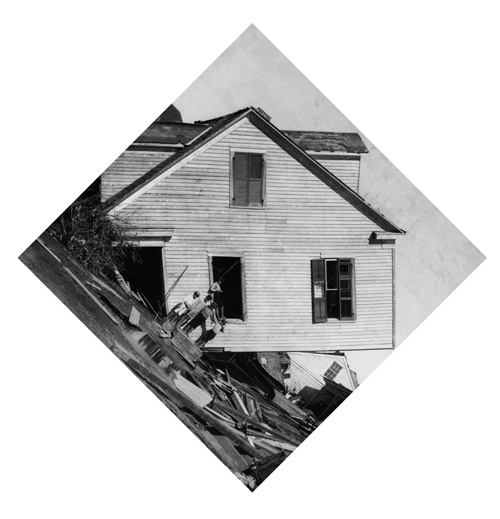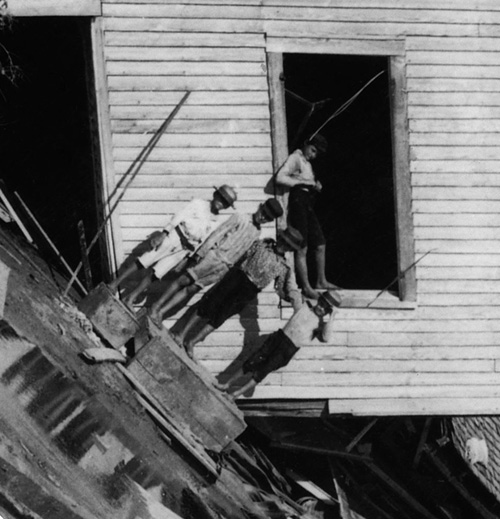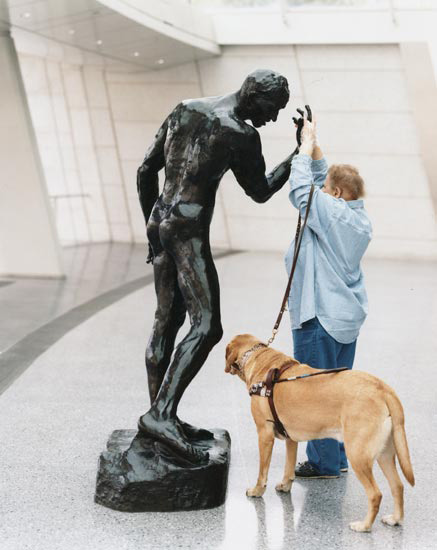Frame Rate
November 30th, 2010
For November, the Artist of the Month is Lisa Oppenheim, selected by Amy Owen, Senior Exhibitions Manager at the Yerba Buena Center for the Arts. Lisa’s edition, Tilted House, is a subtle work of research, appropriation, and gesture. Lisa is represented in New York by Harris Lieberman Gallery and is included in the Guggenheim’s current show, Found in Translation.
MB: Where did you find this photo? Do you have any background information about it?
LO: I found the photo in the Library of Congress website. I was looking up “damaged” images, looking for rotted out negatives, and found this and thought the kids in it were super interesting. It is from the great Galveston flood of 1900.
MB: That overturned house almost could have inspired Dorothy’s house in The Wizard of Oz. The Galveston Flood is the deadliest natural disaster ever to strike the United States. If the kids depicted are interesting, is it for reasons other than their survival?
LO: It is interesting because the kids are obviously lying down in the doorframe so through the simple gesture of turning the image 45 degrees, I am propping them up. Other than that… It makes sense, I mean, where else would there be for kids to hang out after the largest natural disaster ever to strike the US? It’s pretty amazing that even in the wake of disaster, people in general and kids in particular, find ways to live their normal lives.
MB: I’m surprised by your response, because usually, when I think of your work, I associate it with being about the medium, and not the more narrative material. For example, your colored photograms seem to be about color interactions and printing processes, and your After Walker Evans series is primarily about archiving, reproduction, and other conditions of photography. On the other hand, your photos of sunsets, shown in Free at the New Museum, are as much about human empathy as they are about digital distribution. Do viewers miss something important about your work when they focus on the formal activity? Or have your interests changed?
LO: Process and medium are always, in the end about people. People engage with and invent these things to serve a human need, the need to represent themselves and the the things around them. I am interested in photography and film as structuring devices, how they both structure and are structured by thought and experience which are two processes that define what it is to be a person in the world. So in that way even the most abstract images without people, are always about people in the end.
MB: That’s a beautiful response. Have you found that photography and film correspond with thought and experience in ways other media do not? One could argue that sculpture is the domain of touch and painting the domain of vision. Maybe film would be the domain of our brains’ sequencing capabilities. Of course, these are highly contestable, reductive notions; but they still could be gateways to more rigorous scrutiny of ways our senses relate to one specific medium or another.
LO: Yes, film and photography correspond very closely to thought and experience. They are direct visual records of things in the world- the world is imprinted on photographic materials in a way that is very different from, say painting, sculpture, or even music. I don’t really want to privilege my media of choice and say they’re more interesting, but there has to be something that draws you to working in one way over another.
Film, in some ways, is entirely dependent on a physiological trick: the persistence of vision. It’s the that which allows the brain to see a succession of flickering images as continuous motion. Experiencing film is therefore entirely dependent our brains’ sequencing capabilities. And that, just as a thought, a kind of meta thing behind everything on celluloid, is particularly beautiful to me.



